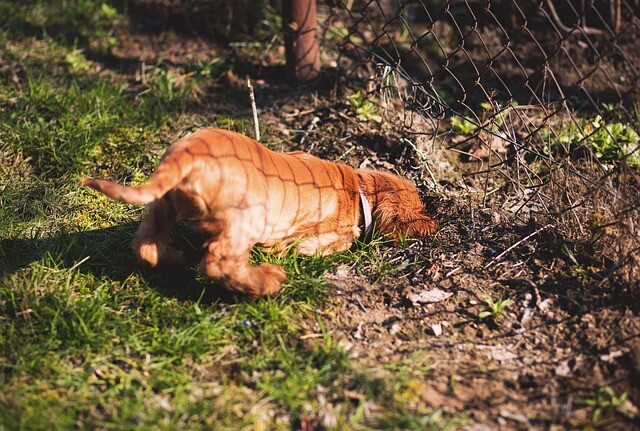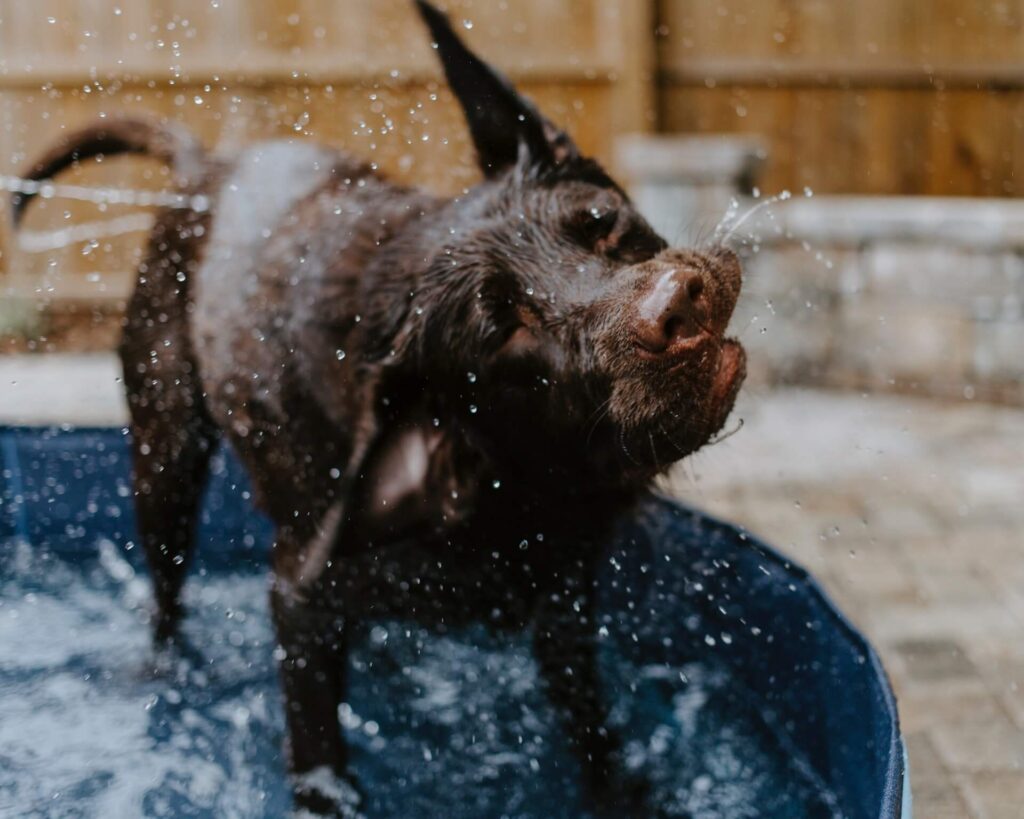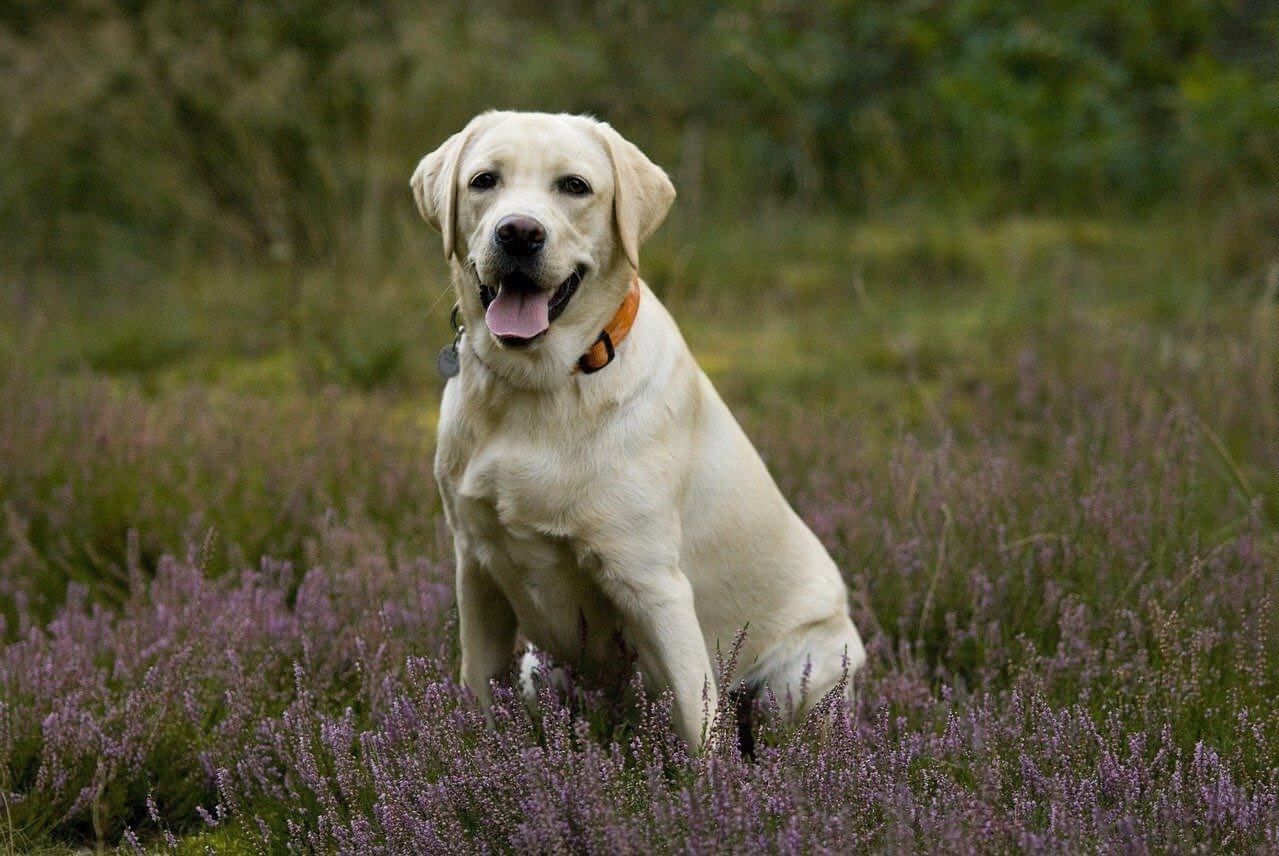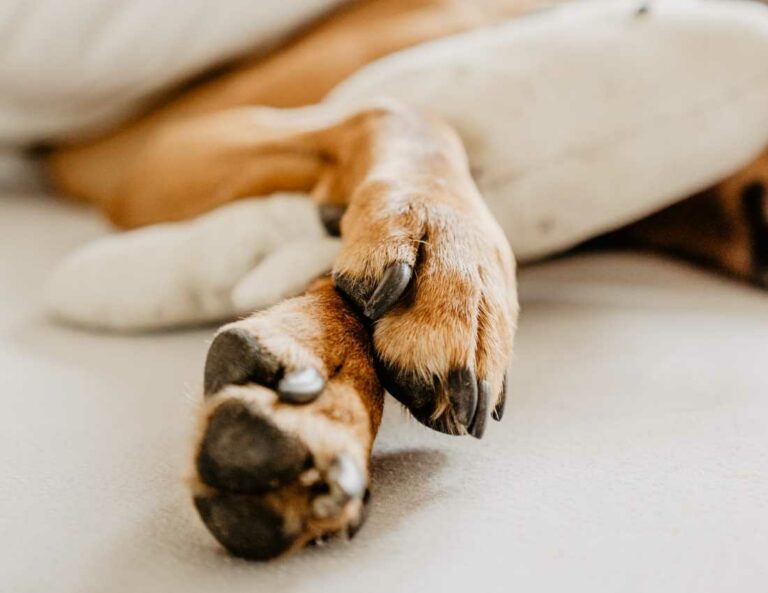Labrador Retrievers are one breed of dog who love being both indoors and outside and thrive on moments of being able to explore nature and their interesting outdoor surroundings.
Though Labrador Retrievers love the outdoors, they also are very attached to their homes and family members.
Can a Labrador live outside primarily as an outdoor dog?
No, not for extended periods of time. It’s not a good idea to have your Lab primarily live outside, as Labs thrive on human interaction, which they won’t get if they spend large amounts of time outside alone. They may suffer physical problems due to exposure to long periods of hot or cold temperatures and can be at risk for running away or being injured when unsupervised.
(This article may contain affiliate links. As an Amazon Associate I earn from qualifying purchases. Learn more)
Let’s go over in more detail why it’s not a good idea to let your Lab be an outside dog, and why they really need to be an inside-the-home part of the family.
Risks to Labs Being Left Outside For Long Periods
Labradors have many amazing qualities and are intelligent dogs who are playful, athletic, and easygoing. They are also very attached to people and thrive on attention and interaction with their human families.
Taking your Lab outside to play, run, swim, or retrieve for fun and exercise is highly recommended, but leaving them to live outside night and day is not.
Labradors Thrive on Human Interaction
Leaving a Lab outside for extended periods of time will limit their interaction with people. Your Lab could become sad or depressed and refuse to eat or shy away from people.
You might see a lack of proper socialization demonstrated by other strange dog behaviors as your dog slowly gets less and less time with people. You may observe hostility, fear, or aggression in dogs who are not socialized with people and do not get enough human interaction.
Lengthy Hot & Cold Temperatures Can Cause Harm
Living primarily outside night and day can also cause your Lab to be exposed to extreme temperatures which could cause them physical harm. Lack of shade, water, and severe heat can be damaging and dangerous to your dog, even causing heatstroke.

In the winter, your Lab could be exposed to heavy snow, bitterly cold temperatures, and lack of sunlight. Their water bowl can freeze at cold temperatures, cutting off access to water.
Inadequate warmth and shelter can pose a risk to your dog. For example, in cold climates, a doghouse in a dog run does not provide adequate protection for your Labrador in severe weather.
Lab Puppies & Medically Sensitive Dogs Are at Elevated Risk
We rescued a litter of purebred newborn Labrador puppies (and their AKC-registered mother) in the western United States from terribly cold outside conditions when the breeder was unable to provide proper care.
This breeder had attempted to make the litter and mother Labrador outside dogs during the winter, and several puppies died.
We were able to bring the entire litter into our home and create a “family place” for the litter of puppies and mother Lab, resulting in the survival of the mother Lab and the entire remaining litter, who went on to become successfully adopted.
Other Health Issues for Labs Left Outside
Labs can also be at risk from other animals when left outside. The longer they spend outside, the greater the opportunity they can be bitten by fleas or mosquitos that carry heartworm disease, putting them at higher risk.
They can be attacked by other dogs when you’re not there to supervise them if you have them out in your yard or chained. Your outside Lab could also be attacked by other animals, such as snakes or alligators, which can be a huge concern depending on where you live.
In fact, most Labrador rescues will not allow you to be eligible to adopt any of their rescue dogs if you are planning to “tie out” or chain your dog outside, because their adoption policies require your Lab to be an inside dog.
Labs Can Run Away or Get Into Trouble When Left Alone
Labradors are extremely athletic and have high energy demands. They are known as one of the most active breeds of all dogs, and will often come up with ways to entertain themselves if left alone and bored.
If left outside primarily, your Lab might find ways to escape your yard or property. They have a high hunt drive and may run away to chase wildlife, other household pets like cats and dogs, a female dog in heat, or the ice cream truck traveling through the neighborhood.
One of our Labradors is a known escape artist even when supervised, who is prone to digging, and who ran away to Buffalo Wild Wings on a walk with us during the Covid-19 pandemic.
Labs are known to be crafty problem-solvers. Fence? No problem, they’ll just dig a nice hole when you’re not looking and make their escape. We’ve had Labradors go both through and over fences, including ones 6 feet high.
We know another Lab owner whose Labrador knocked down part of their fence when left unattended outside because they were curious about something the neighbor was doing in their yard.
Leaving your Lab as an outside dog might also result in them destroying things like their dog run, doghouse, dog bed, food or water bowls. We’ve seen dogs chew through chain-link fences because they were annoyed about being left unattended for too long of a time.

How to Keep Your Lab Living Inside Instead of Outside
Perhaps you’re wanting to get a Labrador Retriever and realize it’s not a good idea to leave them outside all the time, so you’re wondering how to handle having them inside your home.
If you’ve never had a dog before, or never had one as an inside dog, you might be feeling a little stressed or worried about how you’re going to handle things. There are a few things you can do to adjust to having your Lab inside if you realize it’s not safe for them to live all their lives outside.
Create an Exercise Plan for Your Lab
Since Labs are high energy, they need a good routine for exercise. Keeping them as primarily an inside dog means you’re going to have to schedule more times for exercise, and this may mean you have to be home to let them out.
You might also have to get help if you typically are gone all day, such as finding a dog walker or doggie daycare place, in order to allow them to get enough exercise each day.
You might also consider installing a doggie door at your home, but make sure your yard and fence are secure, and that your Lab’s temperament can sustain it (see the above section on mischievous Labrador behavior).
Taking your dog on multiple walks each day, playing fetch, going to doggie daycare, or going to the dog park are all excellent ways to help your Lab stay active and get enough physical exercise.
It will also help your dog be easier to live with inside and may help them remain more calm and tired when they’re sharing your indoor living space.
Keep a Good Routine of Bathing & Grooming
Sometimes people leave dogs outside because they think they might be dirty or messy. And it’s true, Labs are playful, energetic dogs who like to roll in the dirt, mud, and generally aren’t afraid to get messy.
But this doesn’t mean you have to allow them to destroy your home if they live inside with you. Get them on a consistent schedule of regular baths and basic grooming, most of which you can do yourself at home for very little cost.
Labs don’t require expensive trips to the groomer like other types of dogs, and are generally happy to have a bath due to their love of water! Keeping your dog clean will help with smells around your home, and also another issue that many dog owners face, which is the concern about shedding in your home.

Control the Dog Shedding In Your Home
This is a big area of concern for all Labrador owners because Labradors are a high-shedding breed. Despite all their other wonderful qualities, they do bring with them a great deal of dog hair, especially in spring and fall when they “blow out” their coats.
Labs have a double coat that makes them such excellent water retrievers and performers in difficult terrain, but around the house that thick coat may result in a lot of shedding.
We have a complete guide to Strategies to Solve Your Lab Shedding Problem, which gives you steps you can take today to make this less of an issue for you around your home.
You can’t stop your Lab from shedding completely, but we’ve got suggestions to make it less of a problem starting right away.
For starters, get this de-shedding brush to immediately improve the shedding situation in your home, while you get to work on our other recommended strategies.
Both controlling shedding and keeping to a consistent schedule of monthly bathing and grooming for your Labrador will also be critical if someone inside your home has allergies and you’re trying to manage to keep your dog inside.
Be aware that Labs are not hypoallergenic dogs, and are known shedders, so you will have to be committed and diligent about staying on top of bathing, de-shedding, and cleaning your home to make this situation more manageable. Even then, it may be difficult for someone with severe dog allergies.
Manage a Big Labrador in a Small Living Space
Perhaps you’ve left your Lab outside because you live in a smaller home or living space, and can’t figure out how to manage a large-breed dog inside who might weigh up to 100 lbs.
There are ways to make a Labrador an inside dog even in a smaller living environment, even if you think it might not be possible based on your circumstances.
For more ideas and solutions on this topic, we have an entire guide full of tips and suggestions for how to make living in a small space work with a large-breed dog such as a Labrador Retriever.
Summary – Can a Labrador Live Outside?
Making a Lab primarily an outside dog is not recommended for the safety and health of your dog. Leaving your Lab outside for longer than just short breaks to play and exercise is not good for the health of your dog, as exposing them to extreme hot and cold temperatures may harm them.
Labs are very people-oriented and need to be around their pack members and families for social interaction. They could also be at risk for illness, running away, or getting into trouble if left as outside dogs without much human interaction.
Before you make the decision to get a Labrador Retriever, make sure you fully understand the commitment you’ll be making and get to know the needs of the breed more in our complete breed overview guide.
Making a careful and informed decision about what type of dog is best for your lifestyle will result in the best outcome for both you and your future dog. And remember, bring that Labrador inside, it’s the best thing for both of you!







